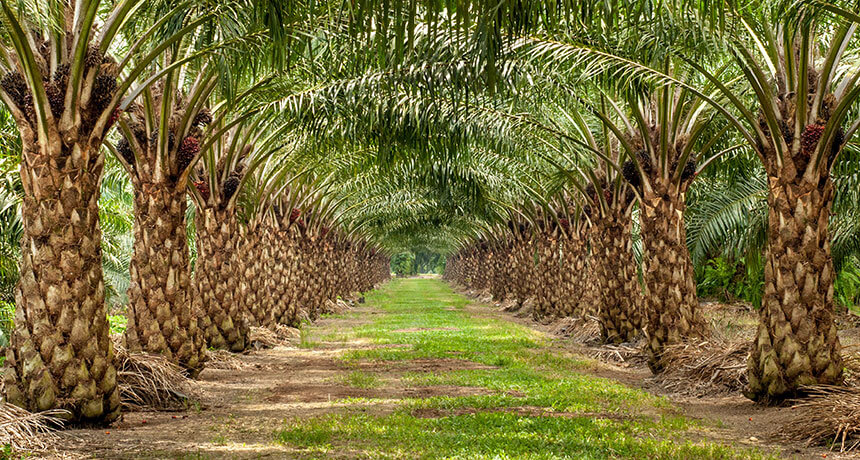Oil palm tree farming is a relatively unexplored venture in Kenya, yet it holds significant potential for economic growth and agricultural diversification. As demand for palm oil continues to rise globally and locally, Kenya can leverage its tropical climate to expand this promising agricultural enterprise. This article delves into the varieties, ecological conditions, planting methods, market potential, and challenges of oil palm tree farming in Kenya.
Varieties of Oil Palm Trees Grown in Kenya
- Dura
Known for its thick shell and low oil content, the Dura variety is often cultivated for its resilience in challenging conditions. - Pisifera
This variety lacks a shell, making it unsuitable for direct oil extraction but ideal for hybridization. - Tenera
A hybrid of Dura and Pisifera, Tenera is the most popular variety due to its high oil yield and quality. - Hybrid Deli
A high-yielding variety developed for commercial farming, Hybrid Deli thrives in tropical climates with proper management.
Ecological Conditions for Growing Oil Palm Trees
Oil palm trees thrive in specific ecological conditions, which makes site selection crucial for successful cultivation. The key requirements include:
- Temperature: A range of 20°C to 35°C is ideal.
- Altitude: 500 to 600 meters above sea level ensures optimal growth.
- Rainfall: Well-distributed annual rainfall above 1,000mm is necessary.
- Sunlight: Approximately five hours of daily sunshine aids fruit development.
- Soil Type: Sandy loam, alluvial clay, or acidic soils with a pH of 5.5 and good water retention are ideal.
These conditions are prevalent in Kenya’s coastal regions, such as Kwale and Kilifi, making them prime locations for oil palm farming.
How to Plant Oil Palm Trees
The propagation process begins with seeds, which must first be raised in a nursery before transplanting to the field.
- Seedling Preparation:
- Seeds are germinated in a controlled nursery environment for 12 to 24 months.
- Proper care, including watering and pest management, ensures strong seedlings.
- Transplanting:
- The recommended spacing is 7m by 8m, allowing enough room for tree growth and maintenance.
- Transplanting should be done during the rainy season to improve survival rates.
- Soil Preparation:
- Apply organic matter and phosphorus-rich fertilizers such as TSP before transplanting.
Fertilizer Application
Fertilizer use enhances growth and fruit production:
- Nursery Stage: Apply phosphatic fertilizers like rock phosphate, TSP, magnesium oxide, or potassium chloride to boost root development.
- Field Stage: Regular application of nitrogen, potassium, and magnesium-based fertilizers improves yields.
Pests and Disease Management
Common Pests:
- Aphids and Thrips: Sap-sucking insects that weaken the plants.
- Armyworms: Cause defoliation by feeding on leaves.
- Red Spider Mites: Affect leaf health and photosynthesis.
- Mealybugs: Damage fruits and leaves.
Control Measures: Use insecticides like Confidor, Applaud, Dynamic, or Volium Targo to manage infestations.
Common Diseases:
- Leaf Spot Disease: Leads to yellowing and defoliation. Manage using fungicides like Dacomil.
- Ganoderma Wilt: Affects the tree trunk, requiring soil fumigation and resistant varieties.
Harvesting and Yield
Oil palm trees take approximately six years to begin yielding fruits. Once they mature, harvesting can continue for another six years. Key indicators of maturity include:
- Change in fruit color from black to orange.
- The natural fall of the first few fruits.
From a single fruit, farmers can extract up to one liter of palm oil. Regular harvesting ensures consistent yields.
Palm Oil: Uses and Importance
Palm oil is one of the most versatile vegetable oils, widely used in industries such as:
- Cooking Oil Production: A staple in Kenyan households.
- Cosmetics: An essential ingredient in soaps, creams, and lotions.
- Food Processing: Used in bread, biscuits, and margarine.
- Industrial Applications: Acts as a base for biofuels and lubricants.
Market Potential for Palm Oil in Kenya
Kenya’s palm oil demand far exceeds its domestic production capacity, leading to significant imports. Major users of palm oil include:
- Oil Refineries: For processing cooking oil.
- Manufacturing Companies: As raw materials for products like soap and cosmetics.
- Retail Markets: Catering to household consumption.
The government has identified palm oil as a potential area for agricultural investment to reduce reliance on imports and create jobs.
Economic and Environmental Benefits of Oil Palm Farming
- Income Generation: Farmers can earn significant income by supplying to processors and manufacturers.
- Job Creation: Plantation management, processing, and logistics create employment opportunities.
- Carbon Sequestration: Oil palm trees absorb carbon dioxide, contributing to climate change mitigation.
Challenges Facing Oil Palm Farming in Kenya
- Limited Awareness: Many farmers are unaware of the economic potential of oil palm farming.
- High Initial Costs: Setting up nurseries, buying seedlings, and preparing land require substantial investment.
- Pest and Disease Pressure: Without proper management, pests and diseases can lead to significant losses.
- Climatic Limitations: Regions outside the coast may lack suitable ecological conditions.
- Market Access: Small-scale farmers often face challenges in accessing lucrative markets.
Opportunities for Growth
- Government Support: Incentives such as subsidies and extension services can encourage farmers to venture into oil palm farming.
- Private Sector Investments: Collaborations with agribusiness companies can provide funding and technical support.
- Research and Development: Developing high-yielding and disease-resistant varieties will boost production.
- Export Potential: Kenya can tap into regional and international markets to export surplus palm oil.
Steps to Start Oil Palm Farming in Kenya
- Land Acquisition: Identify fertile land in regions with suitable ecological conditions.
- Training: Attend workshops or seek guidance from agricultural experts.
- Seedling Purchase: Source high-quality seedlings from certified nurseries.
- Field Preparation: Ensure proper soil preparation and irrigation systems.
- Regular Monitoring: Continuously monitor the farm for pests, diseases, and nutrient deficiencies.
The Future of Oil Palm Farming in Kenya
With strategic investments, government support, and awareness campaigns, oil palm farming can transform into a thriving industry in Kenya. Scaling up production will not only reduce reliance on imports but also position Kenya as a regional leader in palm oil production.





